Inescapable within the realms of industrial design, product design, and invention development, the concept of prototyping is always mentioned or suggested to inventors and creators looking to bring their invention ideas to life.
To the ambitious inventor, coming up with a concept comes easy, but one might forget about the physical and technical aspects that come along with turning a simple idea or sketch into a tangible item. When striving to actualize a concept design or idea, prototyping is almost always necessary and is an exceptionally important step in the process of creating and developing a product.
The core purpose of this white paper will be to introduce the idea of a prototype, explain its importance to product production procedures, and expound upon the different types of prototypes an inventor will come across when planning product development. Ultimately, it will comprehensively explain the frameworks and integrality of prototyping.

What is a Prototype?
Understanding what a prototype is at its base is not as difficult as it sounds. Although there are many technical aspects that go into creating a prototype, understanding why it is made and how it will be used is quite simple. Essentially, a prototype is a physical manifestation of your idea or concept.
It will serve as a functional sample of your product made of different mediums to help solidify decision-making regarding physical attributes, inform by testing the functionality of the product design, and, most importantly, assess the viability of your product.
Prototypes are especially important for inventors because they allow the creator to understand the feasibility of an idea. In your mind, it might seem foolproof, but once you actually set out and bring it into the physical world, additional obstacles or considerations may arise that you may not have previously accounted for.
Additionally, prototypes are essential when you need to present your idea to a potential client. If you plan on selling your product idea to customers or securing funding through investors, they need to see and feel what they are buying so they are reassured that their money is being well spent. Thus, prototypes are essential to acquiring the requisite funding for your product idea to exist.
Why are Prototypes Important?
Prototypes are important for several reasons. The most fundamental reason for prototyping your idea is to simply prove that your idea works. Viability in product invention is extremely important and always necessary because you need to show not only that your idea works but that it works well.
Another point to consider is that your design needs to translate into a working product. Prototypes are not just aesthetic pieces where you can apply any design or detail to your idea and have it function properly. Your design needs to be realistic and aligned with your product’s core purpose, and your prototype should prove that.
Alongside having your prototype demonstrate its function, having a prototype adds value to your project by showing that there is an actual interest in and – more importantly – a genuine belief that having physical access to your product will impactfully improve the lives of others.
Often, it is the engineer or designer who will suggest creating a prototype. This is mainly because prototyping is essential for understanding how the product will be produced and manufactured. It is impossible to manufacture a product that has a design flaw or improper functionality. This is why design for manufacturing is so important. Ultimately, having a prototype is needed to secure any sort of manufacturing contract or partnership.
It also gives detailed insight into how the initial product design needs to either be refined or redeveloped as a whole, which is something you want to understand early on in the product development process.

Material
Having a product that works is important, but making sure that your product can stand the test of time is equally significant. Thus, materials selection is critical! In addition to considering how the product will feel in the hands of the consumer, you need to ensure the quality of the product.
Always keep in mind that your product should be able to function in the way it has been advertised to and for as long as possible without breaking. If your product has pieces that come out or off easily or are highly susceptible to natural elements or impact, this is where your competition could get the upper hand, or even worse – consumers simply won’t be interested in purchasing your product.
Fear not, though! As it is the industrial designer or engineer who will recommend building an invention prototype, a good engineer will typically know which materials will work best for the product’s desired function. They may even suggest 3D printing to iron out inefficiencies.
Although the beauty of prototyping is that you have the freedom to experiment and try out a variety of different materials to see which aligns best with your product vision, it is important to remember the technical aspects of the product and the function it serves.
Finally, it is integral to discover which material or medium will work best when scaling your product. Scaling, proportions, and sizing are essential to product design because size affects functionality immensely. Having a product that is too small or too large can hinder how your product works and the user’s desire to purchase your product. It is also important to note that for larger consumer products, different cheaper materials can be used throughout the prototyping stages to cut costs!

Product Redevelopment
Something extremely handy and useful about invention prototypes is that they afford an excellent opportunity to evaluate how your product will look, feel, and work. Once an initial prototype is out, it’s a good idea to focus on its main functions and make sure that the product does what it’s supposed to do.
Once you have a stable product, you can continue to redevelop and refine your prototype in a multitude of different ways. This is the glory of prototypes – you can constantly change and iterate based on different ideas, concepts, functionality, materials, and details over and over until you get the desired vision or product design for your invention idea.
The Different Kinds of Prototypes
To the non-designer or engineer, the hardest part about understanding invention prototypes is learning all the different kinds of prototypes and what they are all specifically used for. As previously mentioned, when designing a product, redesign and redevelopment are inevitably bound to happen. They are quintessential to the product design process.
Therefore, as the inventor, it is likely that you’ll encounter not just one prototype that is being constantly redeveloped, but several prototypes with different purposes going through iterations to create the perfect model for your product idea. The different types of prototypes are as follows:
Wireframe Prototype
Typically, once the product idea is laid out on the table for all parties to understand, the first step of every inventor’s product design journey entails the industrial designer or engineer drawing out a couple of rough sketches. These sketches are based on what both the designer and the inventor believe is the best way to design the product for its desired function.
This initial sketch is known as a wireframe and primarily serves as a simple illustration or basic schematics that include the barebones design of the idea, the layout, and the sequence of the product. It serves as the first step in visualizing your product idea and considering where it needs to change or be improved to accommodate everything that should be included within the design.

Presentation/Mock-up Prototype
A presentation or mock-up prototype, although not as exciting as the actual concept prototype, is simply a prototype demonstrating how the eventual product is going to look. The focus of presentation and mock-up prototypes is to present the inventor or client with the general outlook of how the envisioned design should turn out or is being developed.
For this reason, presentation and mock-up prototypes almost always have no actual functionality as they simply serve as a more refined vision for the design of the product. A key benefit of this type of prototype is that it allows both the client and designer to understand which parts go where and how the product will be held or felt in the hands of the consumer.

Concept Prototype
The most commonly used prototype is the concept prototype. This prototype is the invention prototype that allows the designer and inventor to assess the functionality of the product. Not only is the design of the product taken into consideration, but the inventor gets to see how their idea works when tested out.
This is the most crucial part of the prototype process as it affords not only an apt demonstration of how the product will work but also insight into the viability of the product! It provides the opportunity for multiple rounds of testing so the inventor and designer can see where the product can be improved to optimize the user experience if it has any faults, and if it effectively works.
This type of prototype is best for showing both the viability and communication of the product. You’ll most likely encounter this type of prototype in the early stages of the development of the product, and it therefore won’t always represent the full functionality of the item.

Feasibility Prototype
The feasibility prototype is simply a prototype developed and presented in order to determine the feasibility of the product. This includes figuring out the various solutions to any potential problems that could occur when someone uses the product or when testing out the product’s target functions.
In addition, the feasibility prototype is used to quickly recognize and fix any technical risks attached to the development of the product. This is especially important to the designer or engineer as they must recognize which parts need to be tweaked or rebuilt.
The feasibility prototype is perfect for testing out the performance of the product as well as its compatibility with the components it is slated to be built with.
Horizontal Prototype
Used in the early stages of product design analysis, a horizontal prototype is not presented in physical form but rather is a user interface that is presented in the form of screenshots.
The goal of the horizontal prototype Is to demonstrate what the outer layer of the human interface will look like. This is a good prototype to have because it allows the inventor and designer to view and clarify the scope and requirements of the product.
Horizontal prototypes are helpful in the sense that they allow for a full understanding of the range of abilities for the product and are useful for presenting ideas to investors, going over the product’s direct requirements, and assessing the need for a redesign.
Vertical Prototype
As the name implies, the vertical prototype, in contrast to the horizontal prototype, is used in the later steps of analysis and design. Vertical prototypes focus on the more technical aspects of the product and give great depth and detail into diving deeper into the product design.
The designer or engineer can investigate where the product can improve or needs improvements in specific features or functions. Vertical prototypes are also handy for looking at aspects such as data, sub-systems, and the functioning of key features.
A vertical prototype is great for evaluating complex designs and proving that even though the design looks complicated, its technical aspects still function appropriately.

Conclusion
As product ideas and inventions come and go swiftly, an inventor needs to invest time and a large segment of the creative process into thoroughly understanding both the idea of their product, the design, and, most importantly – its initial function.
Investing time into creating multiple invention prototypes is always a secure method in testing out all elements that need to be considered when creating a new product or when considering the possibility of redeveloping a product that already exists.
Prototypes not only benefit the inventor by providing a hands-on and detailed view of how their idea or invention will work once in physical form but additionally showcase all technical aspects, material choice missteps, and possible faults that could have been missed if you were to only have an initial concept sketch of the invention.
If you have a great new invention and you’d like to learn more about this process, get in touch with MAKO today to find out more. Or feel free to give us a call at 1-888-806-MAKO, and we can set you up on a call with our senior product strategist!
About: MAKO Design + Invent is the original firm providing world-class consumer product development services tailored to startups, small manufacturers, and inventors. Simply put, we are the leading one-stop-shop for developing your physical product from idea to store shelves, all in a high-quality, cost-effective, and timely manner. We operate as one powerhouse 30-person product design team spread across 4 offices to serve you (Austin, Miami, San Francisco, & Toronto). We have full-stack in-house industrial design, mechanical engineering, electrical engineering, patent referral, prototyping, and manufacturing services. To assist our startup and inventor clients, in addition to above, we help with business strategy, product strategy, marketing, and sales/distribution for all consumer product categories. Also, our founder Kevin Mako hosts The Product Startup Podcast, the industry's leading hardware podcast. Check it out for tips, interviews, and best practices for hardware startups, inventors, and product developers. Click HERE to learn more about MAKO Design + Invent!
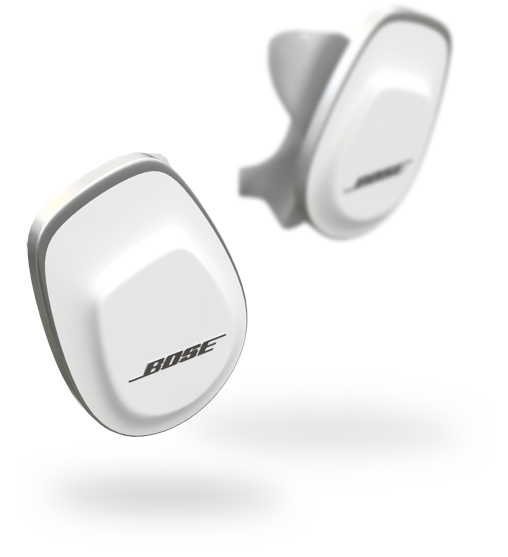


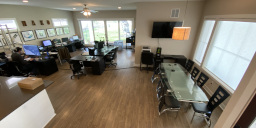
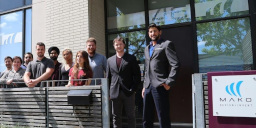
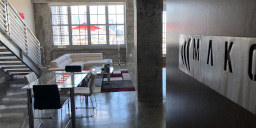
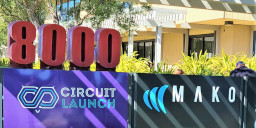

Afton Jackson
2021-04-01 at 7:45 pmThe part of your article that talked about how prototypes are made to achieve realism in industrial designs was really interesting to read. I have always wondered how specific parts were made for large machines and how people design them to be exactly the way they are. Prototyping definitely sounds like an important part of the process, and I can imagine I would need to find a reliable prototyping service if ever I were to be in the manufacturing business.
Mako Design
2021-04-12 at 11:23 amHi Afton, we’re glad you enjoyed the article! Many of our team members and clients enjoy the prototyping process as well. It allows them to get hands-on with the function and design of the product. Along with the various types of prototypes listed in the article, there are a number of interesting techniques such as rapid prototyping and iterative prototyping to build test versions of the product. Keep in touch Afton, it was nice hearing from you!
Claire Masters
2021-12-28 at 12:11 pmIt’s interesting to know about product prototype development and its role in creating a model that would be tested out in multiple trials to create a successful product from the other not-so-successful ones. If I am a business owner, I would understand how this concept is really important to thrive in any industry. This is because newer and better products usually create a buzz around consumers, making them popular and boosting company sales.